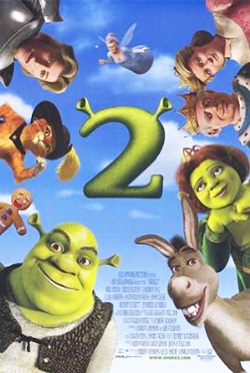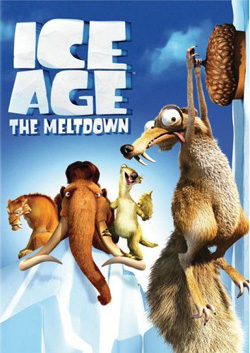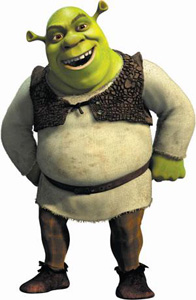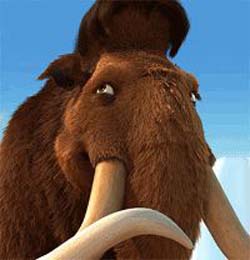Children's movies are not just for kids anymore. More often
than not, parents and those of us who are no longer 'kids,' are just as interested in seeing animated films
as members of the younger generation are. Usually, this is because the stories have deeper meanings. They
are not what they appear to be, and these 'hidden references and representations' make the films more
attractive for older audiences. Regardless of whether or not these references are inappropriate, they are
significant because, usually, the intended audience (children) has trouble consciously recognizing and
interpreting these references. While there are many reasons that this concept is appealing to adults,
the main draw is that there are elements that they too can enjoy when their child watches animated films.
Another interesting aspect of animated films is that they help construct childhood (Lacroix 216).
Two animated films in particular, Shrek and Ice Age are able to reach both adult and child audiences
because of the way that it is made. The story is one that appeals to children in particular, but the
humor and underlying references make each more universal. In fact, not only are these 'adult' references
able to be hidden from the children, the movies are able to speak to different social issues as well.
The characters from these two movies have distinctive traits that speak to societal issues. Most of
these are addressed merely by their visual representations. The ideas of princes and princesses are
challenged, and consequently so are the characteristics of a hero challenged. The meanings of images do not
"reside in the image itself, but is generated in the interaction between viewer and text" (Lewis 657).
These two films have many
different characters, but they also have several characters that parallel one another (Shrek and Manny;
Donkey and Sid), and for this reason, it would be beneficial to examine how each film attempts to address
these societal issues and what ways they do so similarly and differently.
 |
Shrek is the story about an ogre who goes on a quest to rescue a princess. He is upset that Lord Farquaad has dumped a bunch of fairy tale creatures on his land, and the only way to get them removed is to bring him back a bride, the lovely Princess Fiona, who has been locked in a tower for the majority of her life (Evely). He begins this quest with a side-kick: Donkey (who is quite literally a donkey who talks). They travel all the way to the tower where the princess is locked up. There they best the dragon and rescue her. The three of them then begin the somewhat long journey back to Lord Farquaad's kingdom (Dulac). On the way back Shrek and Fiona fall in love and Donkey discovers the Princess' secret. She is cursed. During the day she looks like a princess 'should,' but at night she transforms into an ogre princess. Just before she decides to tell Shrek, he overhears part of her conversation with Donkey and completely misinterprets the meaning. He storms off and then Princess Fiona finds herself the betrothed to Lord Farquaad. Donkey talks some sense into Shrek, and they decide to break up the wedding. Shrek finally finds out what Fiona has been hiding, and they defeat Lord Farquaad, so that Fiona is free to marry Shrek, her true love (Evely). Fiona becomes and ogre, because she takes on the form of her true love. They get married, and essentially, the happily ever after ending is completed. |
| Ice Age, is the story of Manfred (Manny) the mammoth. He is traveling around alone, when he meets Sid, the sloth. Sid latches on to Manny and ends up following him around. The saber-toothed tigers in the film end up attacking a village of people in order to get revenge by taking the child of the man who killed several of their herd members. During the attack, the mother is able to escape with the child, but she herself is not able to survive; instead, she pushes her child into the waiting paws of Sid the sloth and Manny the mammoth. Sid feels a large pull to help save the child and find his family, but Manny resists. The tigers show up, and Manny decides to help Sid find the humans. The rest of the story details their journey and the slow friendship that begins to form between Manny and Sid. Through this trip, another friendship forms: one with Diego. Diego is one of the tigers looking for the baby, but he tricks Manny and Sid into going his way and walking into a trap with his other herd members. He eventually begins to feel bad, and ends up fighting against his own herd for the safety of his 'new' herd. They are successful in returning the little boy to the humans, and then the movie ends, with all characters seemingly happy. |  |

